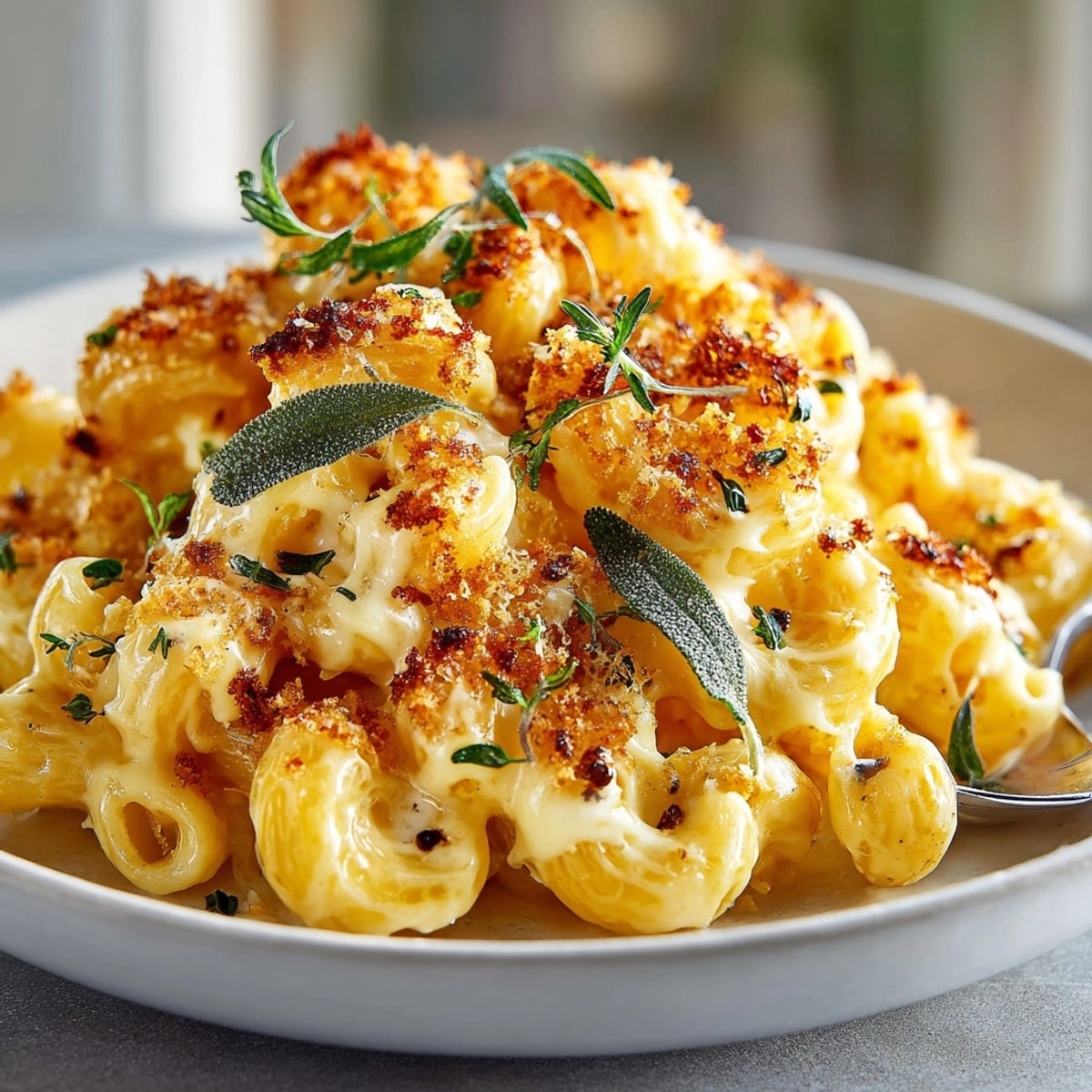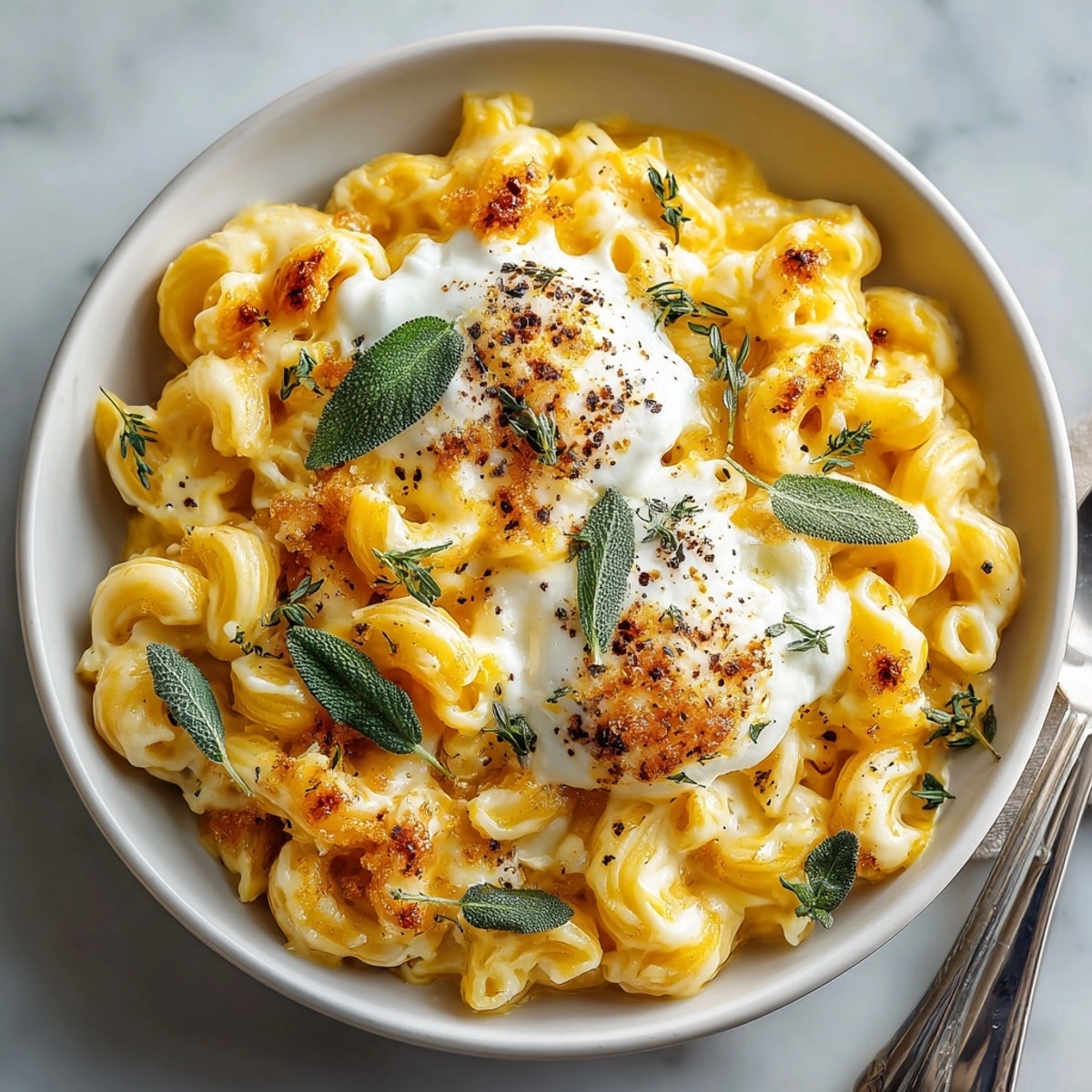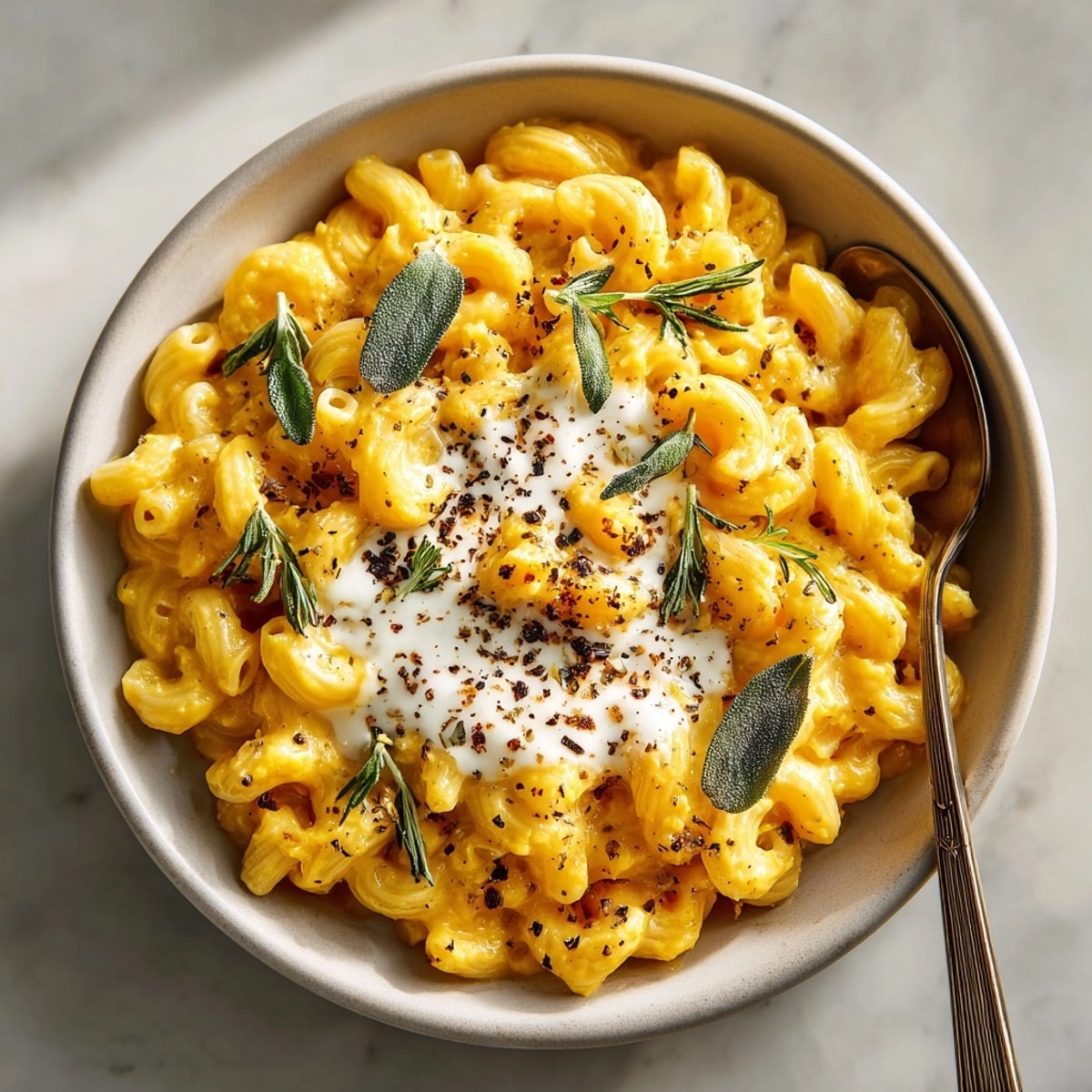 Save
Save This butternut squash mac and cheese transforms a classic comfort food into an elevated culinary experience with the addition of sweet roasted squash and a sophisticated brown butter sage foam. After perfecting this recipe during fall cooking experiments, it's become my signature dish for dinner parties where I want to impress without spending hours in the kitchen.
I created this recipe when trying to convince my cheese-loving partner that vegetables could enhance rather than detract from his favorite dishes. Now he requests this butternut version more often than the original.
Ingredients
- Elbow macaroni or short pasta: provides the perfect vehicle for catching the creamy sauce in every bite
- Butternut squash: adds natural sweetness and velvety texture while boosting nutritional value
- Sharp cheddar cheese: delivers that classic mac and cheese flavor with enough punch to stand up to the squash
- Gruyère cheese: brings nutty depth and superior melting qualities for the smoothest sauce
- Fresh sage leaves: offer an earthy aromatic quality that pairs beautifully with both butternut and brown butter
- Whole milk and heavy cream: create the perfect base for the foam with enough fat content for stability
- Unsalted butter: allows you to control the salt level while providing rich flavor
Instructions
- Roast the Butternut Squash:
- Preheat your oven to 400°F and prepare your squash by peeling, deseeding, and cutting into uniform 1-inch cubes. Toss thoroughly with olive oil ensuring each piece gets a light coating, then season with salt and pepper. Spread the pieces in a single layer on your baking sheet giving them room to caramelize. Roast for 25 to 30 minutes until the edges develop a golden brown color and the flesh yields easily when pierced with a fork. The caramelization is crucial as it concentrates the natural sugars and creates depth of flavor.
- Prepare the Pasta:
- Bring a large pot of water to a rolling boil and add a generous tablespoon of salt. The water should taste like seawater to properly season the pasta from within. Add your pasta and cook until just al dente about 1 to 2 minutes less than package instructions suggest. Reserve half a cup of pasta water before draining which can help thin the sauce if needed later. Drain but do not rinse the pasta as the starch helps the sauce adhere better.
- Create the Cheese Sauce:
- In a large heavy bottomed saucepan melt your butter over medium heat until it bubbles. Sprinkle in the flour and whisk continuously for about 2 minutes until it smells slightly nutty but remains pale in color. This roux is the foundation of your sauce. Gradually add warm milk in a steady stream while whisking vigorously to prevent lumps from forming. Continue cooking and stirring until the sauce thickens enough to coat the back of a spoon about 3 to 4 minutes. Reduce heat to low and add your grated cheeses a handful at a time allowing each addition to melt completely before adding more.
- Blend in Butternut Puree:
- Take your roasted squash and transfer to a blender or food processor. Blend until completely smooth with no visible chunks remaining. Add this vibrant orange puree to your cheese sauce and whisk until fully incorporated. Season with nutmeg which complements both the squash and cheese beautifully. Taste and adjust salt and pepper remembering that the pasta will dilute the flavor slightly.
- Combine and Assemble:
- Add your cooked pasta directly to the sauce mixing gently but thoroughly to ensure every piece is coated. If the sauce seems too thick use a splash of the reserved pasta water to achieve your desired consistency. The starch in the water helps maintain the creamy texture while thinning the sauce. Transfer to a serving dish that will showcase the beautiful color.
- Make the Brown Butter Sage Foam:
- In a small saucepan melt butter over medium heat watching carefully as it progresses through stages. First it will foam then the milk solids will begin to brown and develop a nutty aroma. This happens quickly so stay vigilant. When the butter reaches a golden amber color add your sage leaves which will crisp almost immediately about 30 to 45 seconds. Remove the crispy sage leaves to a paper towel. Add the milk cream and pinch of salt to the browned butter warming gently without boiling. Use a milk frother or immersion blender to create a light airy foam.
- Serve and Garnish:
- Portion the mac and cheese into warmed bowls or plates. Spoon the brown butter sage foam generously over each serving creating a dramatic contrast between the orange pasta and the white foam. Top with crispy sage leaves which not only add visual appeal but also provide textural contrast and concentrated flavor.
 Save
Save The brown butter sage foam is what truly elevates this dish from good to extraordinary. I discovered this technique while working in a restaurant kitchen years ago and have adapted it for home cooking. The contrast between the earthy sage and nutty browned butter creates an aromatic experience that transforms each bite into something memorable.
Storage Tips
This mac and cheese keeps beautifully in the refrigerator for up to 3 days in an airtight container. When reheating add a splash of milk and stir gently over low heat to restore creaminess. The foam cannot be stored separately so save that step for just before serving. If you need to make this dish ahead for a gathering prepare everything except the foam and reheat gently with added milk before creating fresh foam to serve.
Ingredient Substitutions
While butternut squash creates the ideal sweetness and color you can substitute pumpkin or sweet potato with similar results. For a dairy free version use plant based milk unsweetened almond works well and nutritional yeast instead of cheese adjusting quantities to taste. The texture will be different but still delicious. Gluten free pasta works perfectly in this recipe just be sure to cook it slightly less than directed as it can become mushy quickly.
Serving Suggestions
This mac and cheese pairs beautifully with a simple arugula salad dressed with lemon vinaigrette the peppery greens and bright acidity balance the rich pasta. For a complete meal add roasted brussels sprouts or broccoli which can cook alongside the squash. If serving for a dinner party consider individual ramekins topped with the foam for an elegant presentation. A crisp Sauvignon Blanc or light Pinot Noir complements the flavors wonderfully.
Seasonal Adaptations
Fall Harvest Version add diced roasted apples and toasted walnuts for texture and seasonal flavor
Winter Comfort Edition incorporate caramelized onions and a pinch of thyme for deeper savory notes
Spring Refresh mix in fresh peas and a sprinkle of lemon zest to brighten the dish
Success Stories
This recipe converted my squash hating nephew into a fan when I served it at Thanksgiving. The familiar mac and cheese format made him willing to try it and the natural sweetness of the butternut won him over completely. Several friends have made this for their children with similar success stories proving that vegetables can be embraced when presented in the right context.
 Save
Save This dish offers a delightful twist on a classic, blending comforting textures with sophisticated flavors. It's a showstopper that's surprisingly accessible for any home cook.
Recipe FAQ Section
- → How do I achieve a smooth butternut squash purée?
Roast the squash until very tender, then blend thoroughly until no lumps remain for a silky texture.
- → What type of cheese works best for this dish?
Sharp cheddar and Gruyère offer rich, nutty flavor, but fontina or mozzarella can be substituted as well.
- → How can I make this gluten-free?
Simply use gluten-free pasta and substitute all-purpose flour with a gluten-free blend in the cheese sauce.
- → What is the secret to fragrant brown butter sage foam?
Let the butter turn golden and nutty before infusing with fresh sage and blending with milk and cream to create a light foam.
- → Can I prepare parts in advance?
You can roast and purée the squash ahead of time, and assemble the cheese sauce just before serving for best results.